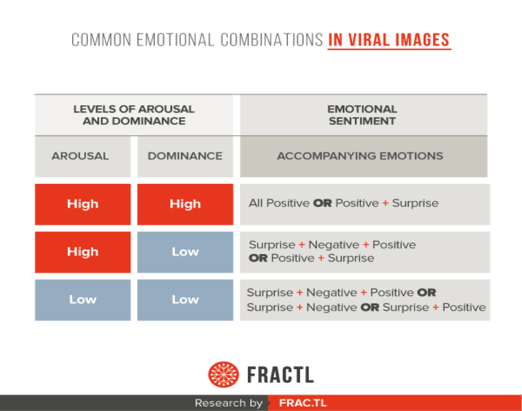What does your brand’s post-pandemic content strategy look like? It’s time to emerge from the COVID-19 pandemic with a vision to take your brand forward in the post-COVID reality. Here are some tips to consider.
Take Your Post-Pandemic Content Strategy Mobile
Now that the world is opening up again, your brand needs to be where people are – on their mobile phones: shopping, eating out, and going on business trips again. Taking your content into mobile-first territory allows your target customers to find your brick-and-mortar location while they’re out and about.
With today’s mobile technology, retail establishments can even trigger product suggestions inside the store, as well as telling your customers where to find the items. Additionally, going mobile-first can boost your brand’s chances of sitting on top of search results for your products.
Enhance Your Digital Strategy
Although many of us are chomping at the bit to get out into society again, we’re still in love with the idea that we can work at home, enjoy a gourmet meal with our comfy pants on, and have the world’s bounty delivered to our front door. A content strategy that gives your customers the power of choice – digital or brick-and-mortar – will reach both the introverts and extroverts among your target customers.
When you enrich your customers’ online experience with dazzling virtual and augmented reality (VR and AR) content, you give them an experience nearly as real as they have in your brick-and-mortar location. Providing them with a stellar experience when engaging on both digital and in-person channels is essential to taking the lead in a post-COVID world.
Enhance Your B2B Content
So, ensure that your B2B content speaks with one voice across all channels. No matter whether your prospects are meeting your sales team from your home office or in your conference room, provide them with the same information about your products, delivered on their preferred channel.
Expand Your B2C Content
Similarly, for B2C companies, strive to make your AR content consistent with your in-store layout. Even better, enhance their experience with pop-up suggestions when they’re in-store and related products when they’re shopping online.
Fine-Tune Your SEO Strategy
Since the pandemic hit, Google has made a ton of updates to its search algorithms. If you’ve seen a ton of newbies among the search results for your products and services, you’re not alone.
This phenomenon has occurred across a broad spectrum of sectors. Leveraging an agile SEO strategy with a content-first, seamless page experience has propelled some new names into the familiar few at the top.
Whether it’s tweaking technical SEO on the backend or updating content to reflect natural-language and mobile searches, your SEO strategy can make or break your brand in this brave new world. No matter how massive your corporation is, the digital universe makes it possible for newbies with more focused content to replace you at the top of your target audience’s search results.
Use Content Analytics to Drive a Thorough Content Audit
Using your social media and content analytics to guide you, go through your past content with a comprehensive content audit. When you discover content that’s not performing up to par, task your content teams to revise it to today’s standards.
If you need more updated technical information to make it relevant to today’s buyers, collaborate with your engineering or development teams to give your content a fresh coat of paint. Similarly, partnering with your customer support and sales teams can yield a fresh look at what your prospects and customers are saying in 2021, not what they were thinking five years ago.
Use the Right Combination of Emotion in Your Messaging
A recent Fractl study revealed that the most viral images on Reddit evoked positive emotions in their audience. In fact, all but one of the top 10 emotional reactions they cataloged were ones that gave the audience a sense of control over their situation.
The one exception was surprise – which works to evoke engagement paired with either negative or positive messaging. However, the same study showed that some negative messaging works, so long as it triggers high-arousal emotions such as disgust or anger.
So, if you do use negative imagery in your content, be sure to provide the audience with a way out – something that puts them back in control. Take them on an emotional roller coaster ride, if you will, but make sure they get off that ride safely – with a feeling of having conquered their corner of the world.
Add Transparency, Authenticity, and Vulnerability to Your Content Best Practices
During last year’s COVID-19 lockdowns, Americans had more time on their hands. They used some of that time to take a deep dive into content they might have once skimmed.
They became more skeptical. They’re not going to buy your new widget just because some celebrity endorsed it.
They want transparent, authentic content that provides them with the facts. Yes, that does make your brand more vulnerable.
But doing so empowers your audience with all the information they need to know to make a buying decision. Here’s why. When you put your audience in the driver’s seat, as the Fractl study shows, they are more likely to trust your messaging.
Show Empathy Toward Your Audience
Empathy is where data and emotion intersect. Using data that you glean from your social media and content analytics, create (or update) buyer personas to give you an up-close and personal view into their mindset.
Don’t stop at your analytics while creating your customer personas.
Touch base with your sales and support teams to learn what your customers are saying to them. Often, personal conversations yield information that helps you fill in the gaps in your customer data and make it come alive.
Putting a human face on your audience members helps you “climb into their skin and walk around it,” as To Kill a Mockingbird’s Atticus Finch advised his daughter, Scout.
After a year of not being able to interact with others freely, a brand that shows empathy with its target customers will stand out. Personalizing your messages to them with messaging that speaks to their needs – their pain points – shows that you’re a brand that aligns with their concerns.
Take Your Customer-Centric Strategy to the Next Level with VoC
Listening to the voices of your customers (VoC) is essential for success as we emerge from the pandemic. But, as Alon Ghelber cautions, you can’t limit that task to the usual suspects – marketing and customer support.
Everyone from your CEO to your janitorial staff needs to realize that listening to and engaging with your customers is indeed their job. Whether it’s a social media comment about how your competitor provides better customer service or a compliment on how well your products work, your entire staff should be your eyes and ears when they’re online.
To get your other teams out of their departmental silos, you need a central hub where your content and customer support teams can engage with people from other departments. DivvyHQ is a content marketing platform that not only supports collaboration – it encourages it.
It’s the magic ingredient that will bring all these post-COVID strategies together in a powerful brand presence on every channel your audience frequents. From ideation to publication to analyzing the results, it covers every step in the collaboration and creation process.
And the best part? Your company can try it for 14 days absolutely FREE with no obligation. Start your free trial today!


